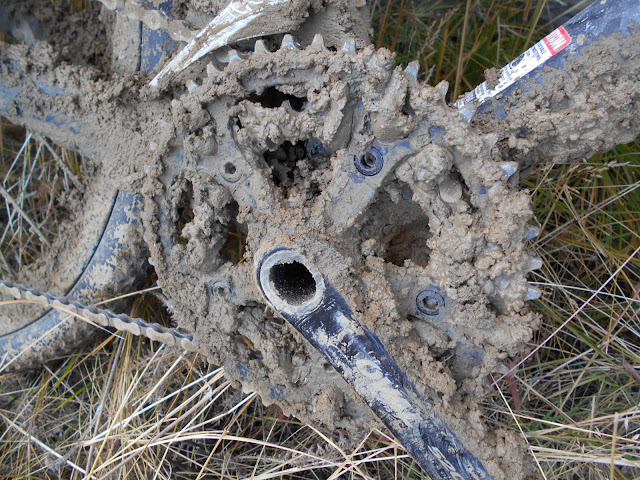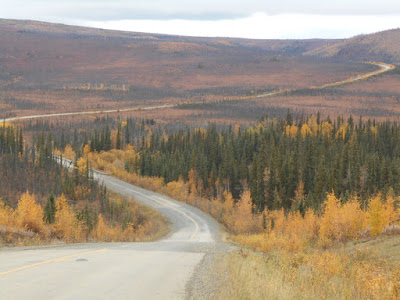My trip dates: Sept 6th - 14th
Day 1. 48 miles Prudhoe Bay - Pump Station 2 area
Day 2. 54 miles Pump Station 2 area - Pump Station 3 area
Day 3. 53 miles Pump Station 3 area to 5 miles past Pump Station 4
Day 4. 59 miles (Atigun Pass). Pump Station 4 - Dietrich River
Day 5. 25 miles Dietrich River to Coldfoot
Day 6. 60 miles Coldfoot to Arctic Circle
Day 7. 60 miles Arctic Circle to Yukon River
Day 8. 60 miles Yukon River to Elliot Highway Junction
Day 9. 71 miles Elliot Highway Junction to Fox
Total mileage ridden 490 miles and total vertical climbed, a massive 33,348 feet!
Here's a graph showing the route's elevation profile. Note that the highest point is Atigun Pass at 4,738 ft. The hills really get frequent and steep after Coldfoot Camp, located halfway at 250 miles on the graph. One starts the trip at sea level in Prudhoe Bay.
Choice of bicycle is up to you. My earlier post on "The Bicycle" covers this subject. Just make sure you have super low gears for the hills and fat tires for the mud and gravel!
Lodging in Deadhorse is $160 per night at the Prudhoe Bay hotel, but includes unlimited meals and snacks at the workers' cafeteria. A room at the Coldfoot truck stop is $160 with meals extra. Typical Fairbanks lodging is $160-$180 per night during the summer tourist season. Fairbanks' campgrounds charge $25 for a single tent, but they close around Sept 1 for the winter.
No rental car company in Alaska will rent you a car or RV for use on the gravel Dalton Highway.
Pistols cannot be purchased by out of state residents, so you will have to bring your own or borrow one. Unloaded pistols (in locked case) and ammo can be shipped (separately from gun) inside your luggage to Alaska. Bear spray and air horns available everywhere in Fairbanks.
Fairbanks is the logistical hub/resupply center for the interior and arctic Alaska. There are major grocery stores and big box retailers in town. Prices are reasonable. Beaver Sports is a great outdoor gear/bike shop if you need camping or bike supplies. REI is also in town now. Goldstream Sports, on the edge of town, is the headquarters for hardcore cyclists/triathletes/nordic skiers.
You can fly and ship your bike via Alaska Airlines and Ravn Air to Deadhorse Airport. Prudhoe Bay Hotel is right across the street from the terminal.
There is no cell service for nearly 500 miles! Only two truck stops for 500 miles! Resupply can to mailed to the Coldfoot Camp post office (open just 3 afternoons a week). Be self-sufficient and enjoy this amazing and challenging wilderness bike ride!
A link to the BLM guide for cyclists doing the Dalton Highway:
https://www.alaskageographic.org/uploads/pdf/dalton-vg2014-web.pdf



































































